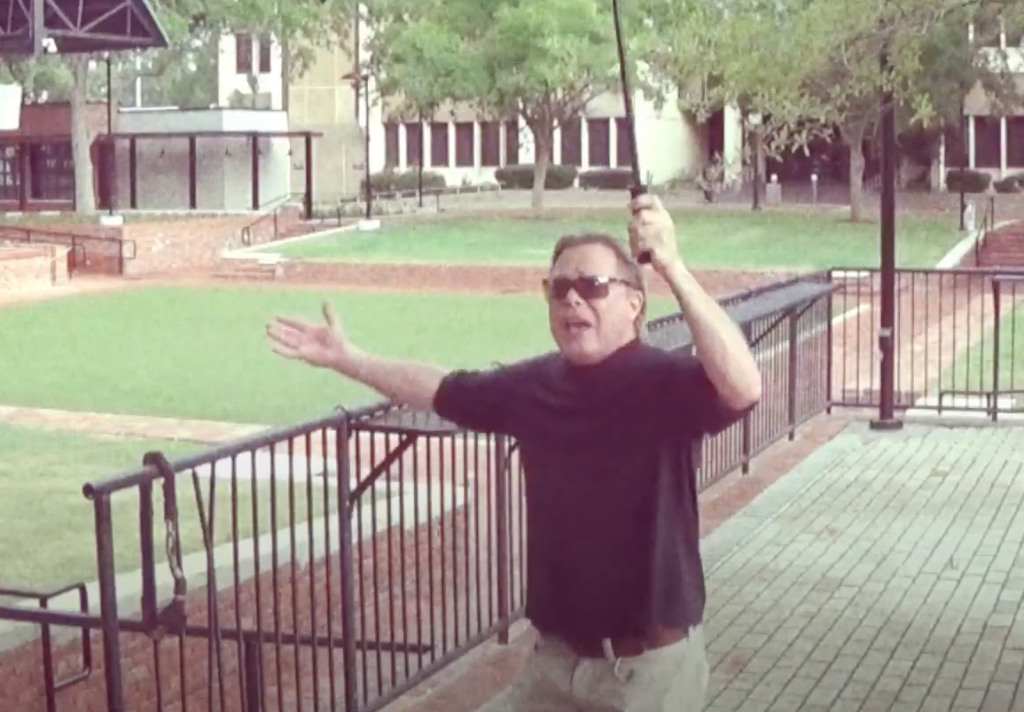Law & Politics
A Florida Man Is Threatening to Sue an Artist Whose Invisible Sculpture Sold for $18,000, Saying He Came Up With the Idea First
Tom Miller, who says he made an invisible sculpture in 2016, is demanding visibility.

Tom Miller, who says he made an invisible sculpture in 2016, is demanding visibility.

Taylor Dafoe

Earlier this month, an Italian artist named Salvatore Garau went viral when his “immaterial sculpture”—that is, a work of art made of literally nothing—sold for €15,000 ($18,300) at auction.
Articles about the sale was shared widely, often accompanied by captions of the “I could have done that” variety. Users posted pictures of blank spaces—their own invisible sculptures which could surely be had for a fraction of Garau’s price. Many bemoaned the fact that they didn’t think of it first.
Then there was Tom Miller, a performance artist from Gainesville, Florida, who says he actually did do it first—and now he’s filing a lawsuit against Garau to prove it.
The Florida artist says that, in 2016, he installed his own invisible sculpture in Gainesville’s Bo Diddley Community Plaza, an outdoor event space. He titled it Nothing and erected it over the course of five days with a team of workers who moved blocks of air like mimes building the Great Pyramid of Giza. Tens of people were on hand to see the opus unveiled that June.
Miller even made a short film about the work, a mockumentary that features fake artists and curators as talking heads. He compares his respective take on nothingness to John Cage’s “4′33″ and Seinfeld.
Finally, a law suit over something profoundly important! https://t.co/AjOR4wTg5o
— Tom Miller (@millerworks) June 29, 2021
“All I can say personally is that Nothing is very important to me,” Miller told Artnet News in an email. “I should be credited with Nothing (specifically the idea of Nothing fashioned into sculpture form), and Gainesville, Florida—not Italy—is where Nothing happened first.”
It’s worth pointing out, of course, that immaterial art has a long history stretching back to the 20th century. Yves Klein exhibited an empty gallery space in 1958 and envisioned an “architecture of air” a couple of years later. Tom Friedman installed an invisible object atop a plinth in 1992—and it sold for £22,325 nine years later.
“When I saw [Garau’s work], I thought, ‘Well that’s exactly my idea,” Miller told local news outlet WCJB-TV earlier this week. “I simply wanted that attribution. I contacted him, he dismissed it away, and then I hired an Italian attorney.”
Miller’s Gainesville-based lawyer, Richard Fabiani, said that they have sent Garau a letter and “are getting ready to file if we are not able to work out an amicable resolution.” As of now, no suit has been filed yet. “We think that it is clear that Mr. Miller created his work before Mr. Garau and we know that Mr. Garau was aware of the work,” Fabiani said. “Mr. Miller clearly deserves to have his work recognized and to enjoy all of the rights and benefits that such recognition brings.”
Miller may have even more competition than he realizes. Since Artnet News first published an article about Garau’s work, numerous other artists have written to me about their own invisible sculpture practices. It turns out it’s hard to get noticed when you’re an artist who makes… nothing.